[Guide] List of 40 Actionable Blog Optimization Tips for SEO
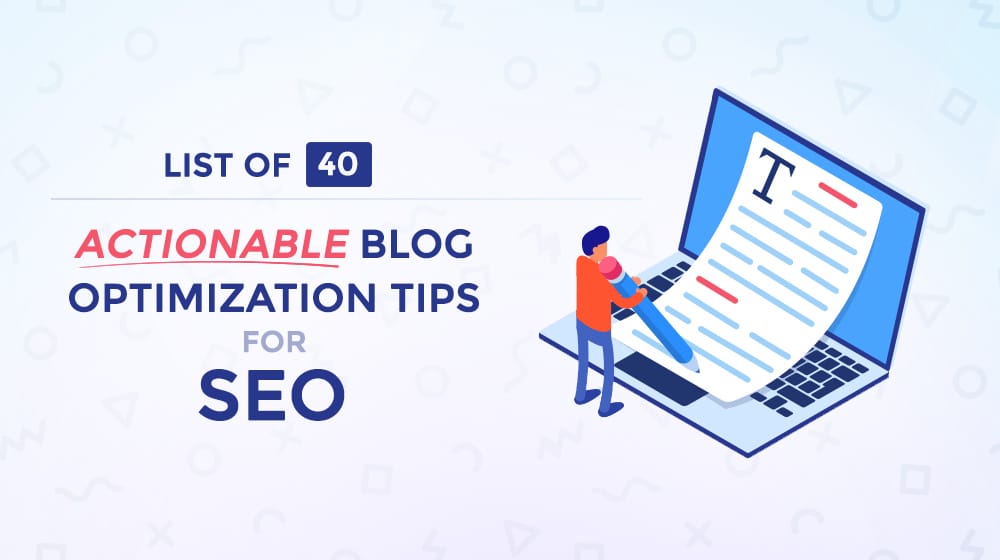
A little while back, I wrote a big list of 30 growth hacks for content marketing.
This turned out to be a pretty beefy post, but it only covers one aspect of content marketing: namely, the blogging and content part. I realized when I was done that I largely ignored most of the gritty mechanics of content marketing. Specifically, I left out a lot of SEO-focused tips and tricks I know about. So, I figured, why not make a list for that too? Thus, this topic was born.
I've put together a "Top 40" list of actionable SEO tips you can use to improve your blog and your content marketing. I haven't gone into a lot of detail for them. Instead, I've tried to link to a good guide – either my own or one from another authoritative site – that can help you with implementation. That way, you can use this post as a checklist, with options for further reading on anything you aren't sure about.
Like the other post, I'm aware that other blogs have written similar lists, and I've tried to avoid as much overlap as I can.
That said, blog SEO is a lot more rigidly defined and a lot better covered than the growth hacks list, so there will probably be a bunch of items on this list you've already heard about. Still, hopefully, there will be something new for anyone who swings by.
Ready? Set? Go!
 30 Second Summary
30 Second Summary
You need to focus on proper keyword research and use long-tail keywords (3-5 words) to compete in today's online world. You should write longer content, with at least 2,000 words per post and break complex topics into separate articles. When creating content, you have to include keywords in your URL, meta title, meta description, H1 title and throughout the text naturally. To improve your site's performance, you need to make it mobile-friendly, use SSL, speed up load times and implement a CDN. You should also add internal links, update old content regularly and build quality backlinks with smart outreach.
1. Perform Keyword Research
Keyword research is the core of a good blogging strategy. You need to know what people want to see before you can write it, right? It's a massive topic, so I'm not even going to try to cover it in this bullet point. I've written about it plenty in the past, like in this article.
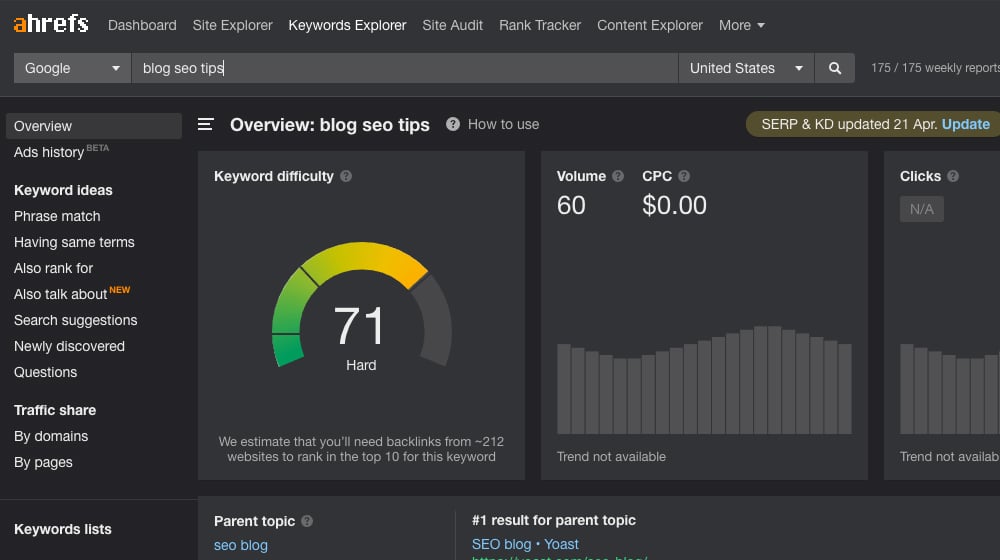
Also, be sure to check out the Ahrefs guide for a great introduction and some tools you can use.
2. Focus on Narrow Keywords
Long-tail keywords – that is, longer keywords made up of 3-5 words, rather than top-level keywords like "SEO" – are practically the only way to compete on the modern internet. All of the low-hanging fruit has already been picked.
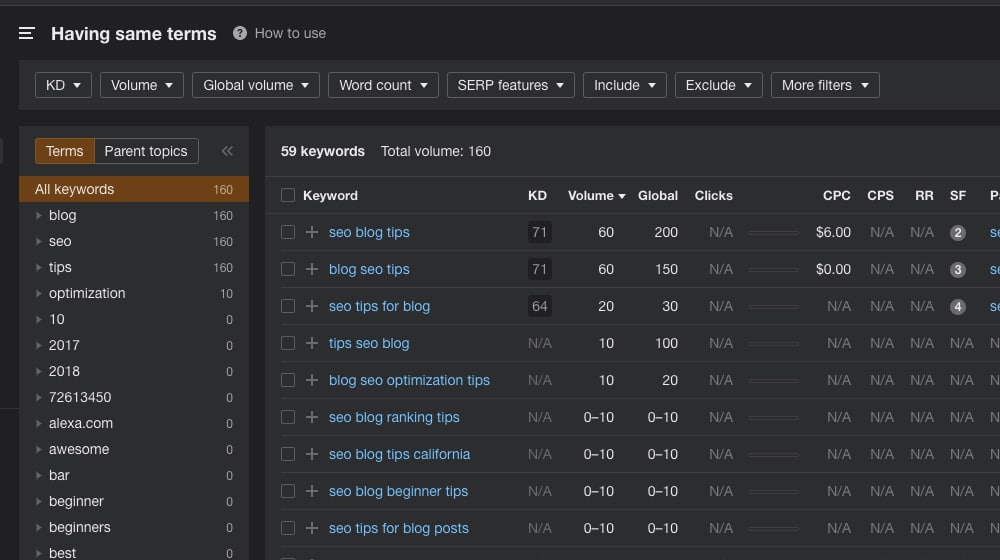
Focus on specific, narrow topics so you can gather interest from people with specific, narrow questions. This is especially important as a growing website - larger sites don't have to worry about this as much as they can often compete at a much higher level with their authority.
3. Minimize Keyword Cannibalization
Keyword cannibalization is when you write about the same narrow subject more than once. A user has to pick which post they want to see, so they'll only click on one; each post only gets a fraction of the traffic and interest.

Blog posts can have some overlap, but if they're too similar, they'll cannibalize traffic from each other. Try to avoid too much overlap.
4. Write About Topics, Not Keywords
Google is incredibly intelligent these days and uses machine learning and natural language processing to understand entire topics, rather than just keywords. If you've ever searched for a keyword and gotten results that don't even use the same words, you've seen it in action. Thus, remember that keywords guide your topic, but you're writing about the topic, not the specific keyword. This also makes it easy to accidentally cannibalize your posts, so keep that in mind as well.
5. Use Keywords in the Right Places
Your primary keyword for a given blog post should appear in all of the right places, when possible.
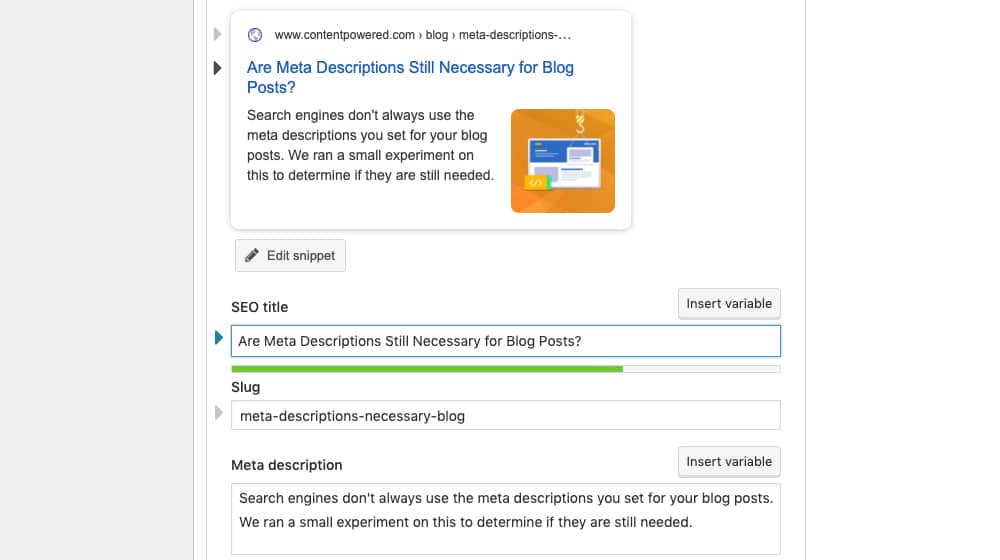
These include:
- The URL slug for the post.
- The Meta Title for the post.
- The Meta Description for the post.
- The H1 title for the post.
- Within the first 100 words of the post.
- Several times throughout the rest of the post.
Luckily, these aren't redundant, so using the same keyword in each of them is easy. If you're staying on topic, chances are that you'll do this organically without even realizing it.
6. Write Longer Content
Content length gives you more opportunity to hit keywords, more value to your users, and more quality for your content. Neil Patel recommends at least 1,447 words. A research study we performed in 2019 found that the average blog post is around 1200-1300 words.
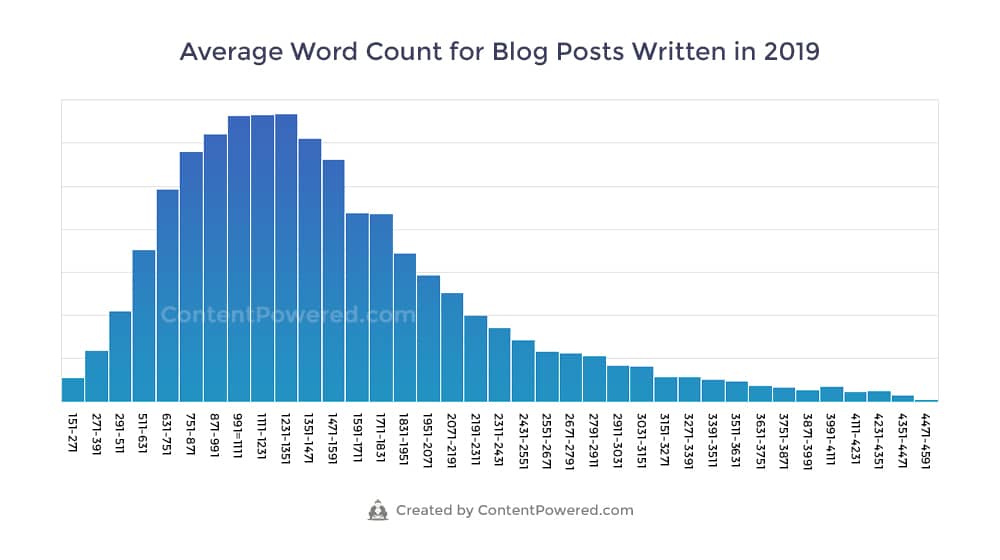
I recommend 2,000 words at a minimum.
Most of the best content you see online can be 3,000 to 4,000 words, or even more. As long as you hit the right minimum of 1,500 or so, go on as long as you need to fully cover a topic. It's much easier to write a better article with long-form content than it is with a low word count.
There's only so much value that you can cram into a short article. Take this one, for instance - what if we stopped at only 5 tips instead of 40? This article would be far less valuable to you, the reader.
7. Break Up Complex Topics
I know I just told you to write longer content, but also, remember that your topics should be narrow. A single "comprehensive guide" won't garner nearly the traffic, links, or benefits to your site that a series of guides will.

Once a post reaches 3,000 or so words, consider whether or not it's worth branching off a sub-topic into a dedicated article. If so, write it as a separate post, and determine which one should be published first for the best logical flow.
A key element of modern SEO is EAT. EAT is Google's acronym for Expertise, Authoritativeness, and Trustworthiness. You can build up all of this by building a reputation for both your brand and yourself as an author.
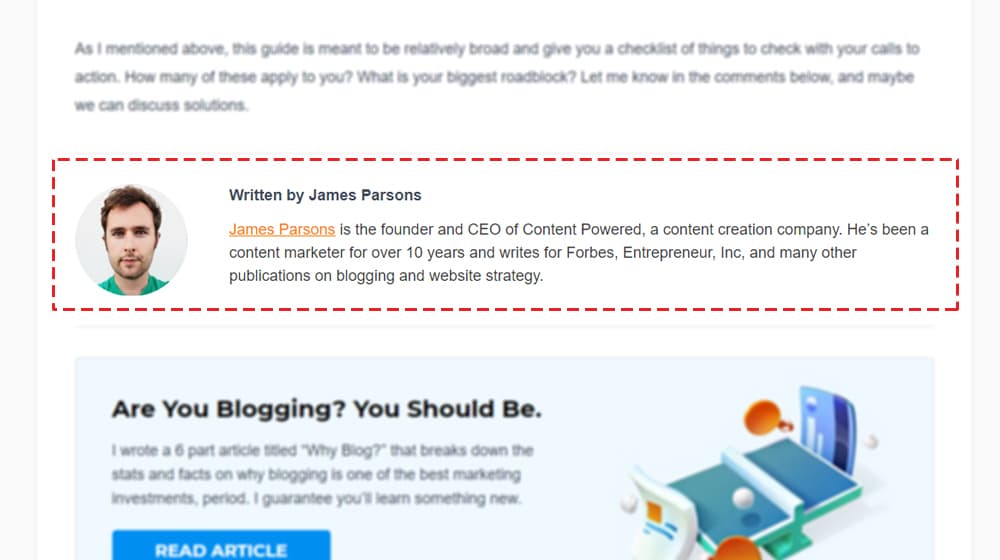
You can build up trust by creating and maintaining an author bio, and using it across your different profiles and your presence on other sites via guest posting.
9. Make Your Site Mobile-Friendly
Google has been focusing on mobile websites for a few years now and has implemented mobile-first indexing. Your website needs a properly optimized and responsive mobile design with a good user experience.
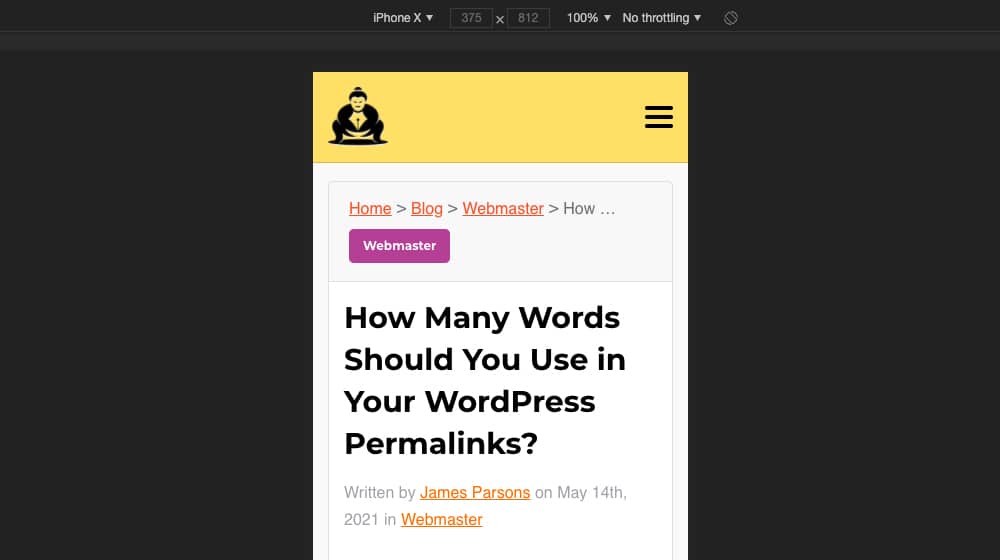
This is no longer optional, as Google considers your "primary" website to be your mobile site. If your mobile site isn't very good, then your website as a whole isn't very good.
10. Use SSL
HTTPS is the secure, encrypted internet protocol that makes the web immensely safer to browse while helping to maintain privacy for users and site owners alike.

It's a ranking factor, albeit a minor one for now, but it's also a huge element of user trust. Make sure your site uses HTTPS across the board, use a server-level redirect for any HTTP URLs to HTTPS URLs, and be sure to keep your SSL certificate live to avoid security warnings when users visit.
11. Double-Check Indexation Periodically
Every so often, check Google's indexation report (the Index Coverage Report) and make sure that your site is fully indexed, and that there aren't any pages being crawled that you don't want to be indexed.

If pages are missing, figure out why, and fix the issue. You can't rank for a page that doesn't show up, after all. You also don't want thousands of tag pages, attachment pages, or thin-content pages that should be hidden (such as "Thank you" pages).
12. Monitor for Manual Actions
Another check you should make periodically – I figure at least once every few months – is to check Google's search console for manual actions. Manual actions are penalties from Google when they discover something wrong on your site.
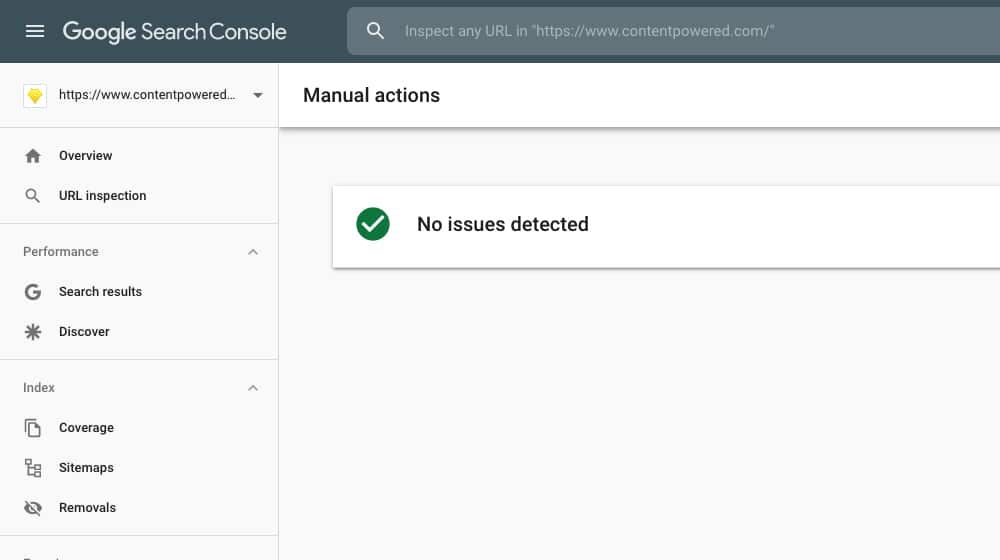
Unlike algorithmic penalties, manual actions restore your search ranking when you fix them. It's always a good idea to double-check to make sure your site is in good standing with Google. It's a good idea to hover around the Google Search Console dashboard in general - you can quickly spot areas that need improvement and act on them.
13. Give Google Your Sitemap
Generating a sitemap and giving it to Google via the search console helps ensure indexation across your site. The sitemap doesn't have to be elaborate – in fact, some of the parameters don't matter much at all – but your sitemap does need to exist.
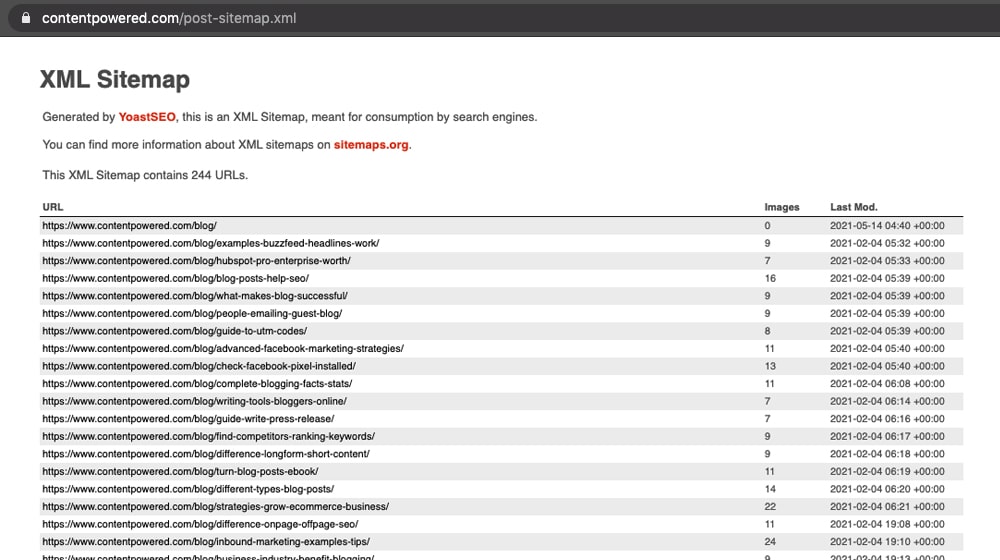
It helps with indexation, coverage, and priority when checking for changes to old blog posts.
14. Use Human-Readable URLs
I'm going to give you two links. Which one would you rather click on?
- https://www.wsj.com/articles/bill-gatess-firm-transferred-1-8-billion-in-stock-to-melinda-gates-amid-divorce-11620227447
- https://www.entrepreneur.com/article/371261
Both of these articles are about the same thing – Bill Gates transferring stock to his ex-wife – but one of them tells you in the URL what it's about and the other does not. The first one is an example of a human-readable URL, which is what you should implement across your site.

Neither URL is ideal, but at least one of them gives you an idea of what the article is about. I wrote a dedicated guide on optimizing your permalinks and strategically choosing keywords, which will help you out here.
15. Use a Compelling Meta Title
Your meta title is the title that appears at the top of the browser window and in the Google search results snippet. It's possibly the single most important piece of metadata that you can have for your blog.
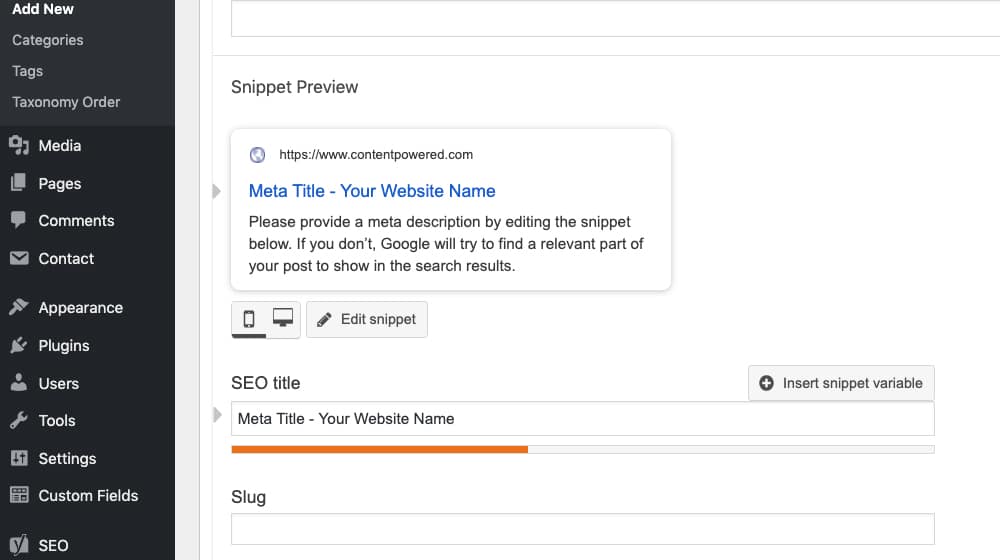
Customize it to appear exactly the way you want it to in search, and make sure it uses your primary keyword. Moz has a great tool to help you generate it. If you use WordPress, I highly recommend Yoast WordPress SEO.
16. Only Use One H1 Tag
Your H1 tag is meant to be the title of your blog post on your page. Some people think H1 should be used for every heading, but that's not true. Google will tend to ignore duplicate H1 tags, so make sure to use the actual hierarchy of H1 for the title, H2 for subheadings, H3 for subheadings below H2's, and so on. Chances are, your posts will never need more than H3.
17. Optimize Meta Descriptions
I'm not a big fan of meta descriptions these days. I've done some poking around and determined that Google ignores them more often than they use them.
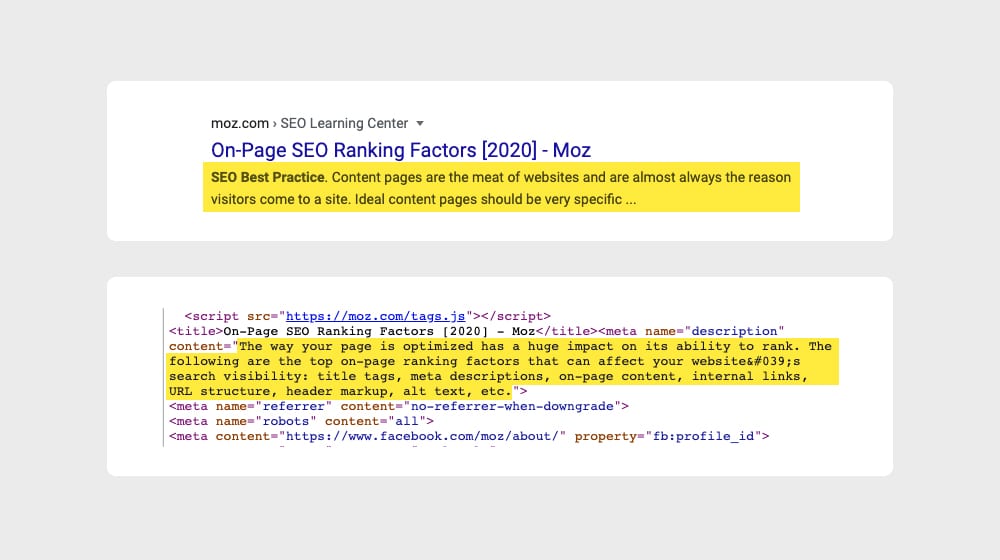
Still, they do use them occasionally, so it's worth putting a few minutes into creating and optimizing them - at least until search engines announce that they're no longer relevant. I think they're going to go the way of meta keywords soon, but that yet to be determined.
18. Use Schema.org When Possible
Schema.org is a Google-backed initiative to add rich data to websites, to make it easier for search engines to identify what pieces of data are important and what ones aren't.
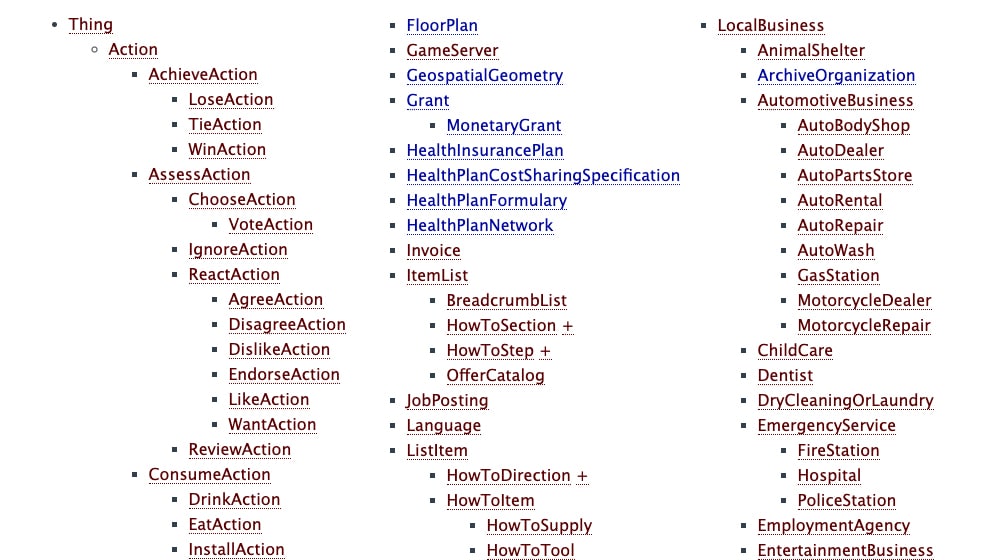
It helps avoid mistakes where Google flags a random number as the price of a product or takes a number out of context as a review for a product, or other such mistakes. It also allows Google to more easily generate rich snippets for the search results, which are always beneficial for a blogger. Here's my guide on them.
19. Speed Up Your Site
Site speed is a big issue for the web today and is of primary concern, especially for mobile users. Spend time optimizing your site's load times. Get rid of large media that slows your site down, lazyload elements that block rendering, pay attention to Google's Core Web Vitals, and generally strive to make sure your site loads for users in under a second whenever possible.
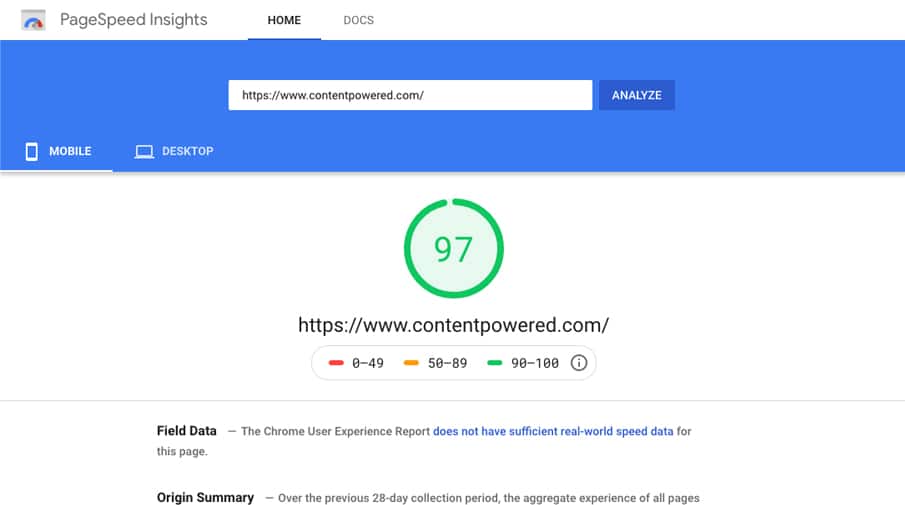
A great way to do this is to take advantage of media queries and serve different assets for users on low screen resolutions. There's no sense in loading giant images for mobile users when you could swap them out for versions that are a fraction of the size. Your site will load faster, your users won't be able to tell the difference, and search engines will be happier.
20. Use a CDN
One way to help speed up your site is using a Content Delivery Network to serve your larger media files, images, and even scripts. Picking a good CDN and implementing it can be a bit of a chore, so feel free to do some research.
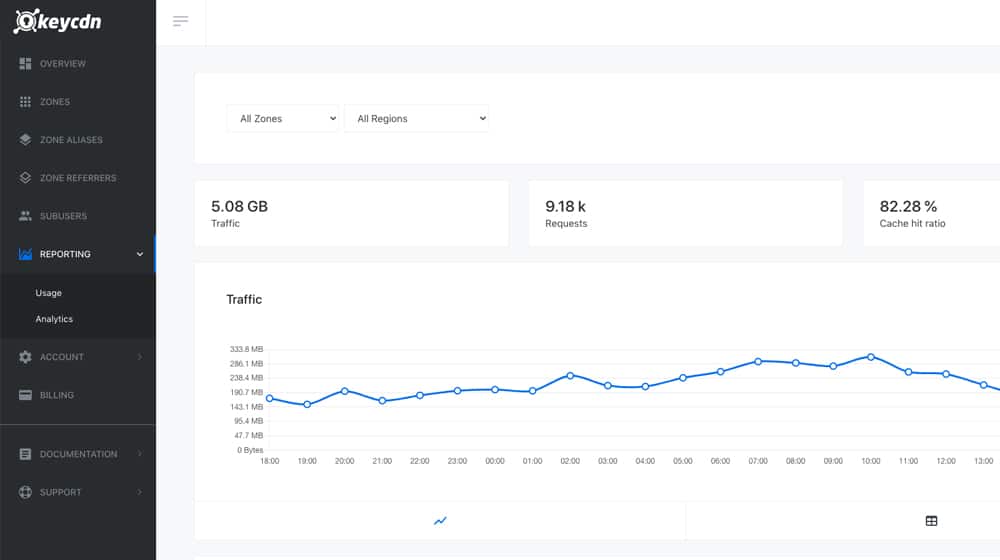
Make sure it's all configured properly and helps speed up your site, as well as offering additional features like DDoS protection, whenever possible.
21. Create Unique Images
Every blog needs images. You can buy them from stock photos or use creative commons images, but I find that those rarely quite capture the essence of a post. It's much better to have customized images created for you. This way you can use them as part of your branding aesthetic and have custom images that can rank in Google image search.
If this article was filled with people on their laptops while pumping their fists into the air, wouldn't you roll your eyes? It's difficult to extract any value from these generic photos.
We create blog content that converts - not just for ourselves, but for our clients, too.
We pick blog topics like hedge funds pick stocks. Then, we create articles that are 10x better to earn the top spot.
Content marketing has two ingredients - content and marketing. We've earned our black belts in both.

Users can sniff these out, too. Graphs, screenshots, and examples of what you're writing about are much better visuals.
22. Compress Images
Images are one of the largest sources of slow load times on a site. The solution is, generally, to smush them down as much as you can.

There are a lot of tools you can use to do this, and it doesn't really matter which one you choose, just make sure to implement it. Ideally automatically, so you don't have to spend a lot of time doing it.
23. Use WebP Images
WebP images are an image format that has been around for a while, but it has recently grown in prominence over the last few years. It's a much better compression algorithm than your usual JPG or PNG files but maintains a near-lossless quality.
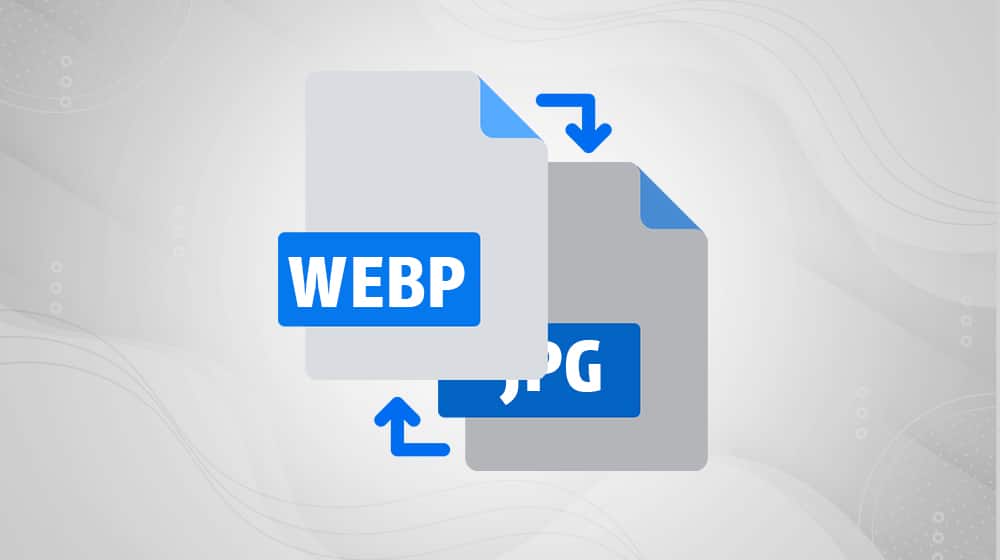
The only downside is that older browsers don't support them. It's tricky to implement a script to serve the right file to the right user, but it's well worth doing until WebPs are commonplace. Most image optimization plugins for WordPress have built-in fallbacks for users on older browsers, which is great news.
24. Use Image Alt Text
Image alt text is essential for three reasons.

- It allows you to add a keyword to the image for additional search relevance in both organic search and image search.
- It gives the screen something to display if the image doesn't load for some reason.
- It's an accessibility feature for people who browse using text-to-speech browsers.
It's 100% necessary that you fill out alt text for every image you use in a blog post.
25. Include 3+ Internal Links in Every Post
Internal linking helps keep users on your site, which improves dwell time, which is an indirect SEO factor.
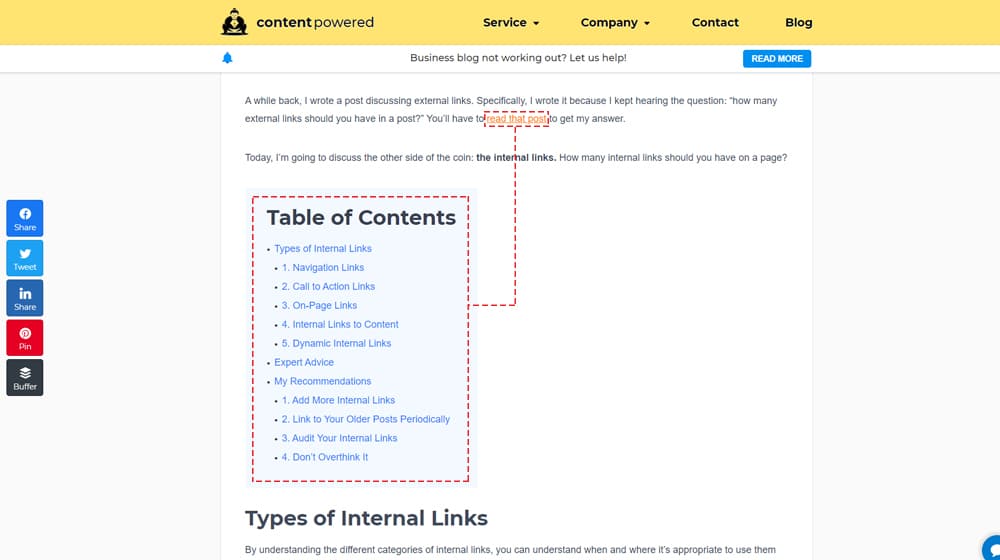
It also helps with indexation and with user navigation. I recommend at least three internal links in every post, but you can easily do more. I even wrote a guide on how to internal link.
26. Repurpose Popular Content
Popular content can be repurposed and recirculated, which gives you more links, more traffic, and more mileage out of the content you created.

How can you repurpose it? I've written about it before, but it goes like this:
- Pare down a blog post into a script and turn it into an audio podcast.
- Set the audio to video and create an explainer or narrated video.
- Prune the script into individual bullets and create an infographic.
- Chop the infographic up and build a slide deck.
That's five kinds of media (counting the original blog post) made out of a single piece of content. Pretty cool, eh?
27. Update Old Content
Old content tends to languish unless it's an explicitly evergreen post on an evergreen topic. Older content should get some attention, every 6-12 months. If a topic is still relevant, update the post. If it's not so relevant, consider merging it with other posts to make a more centralized post, or get rid of it entirely.
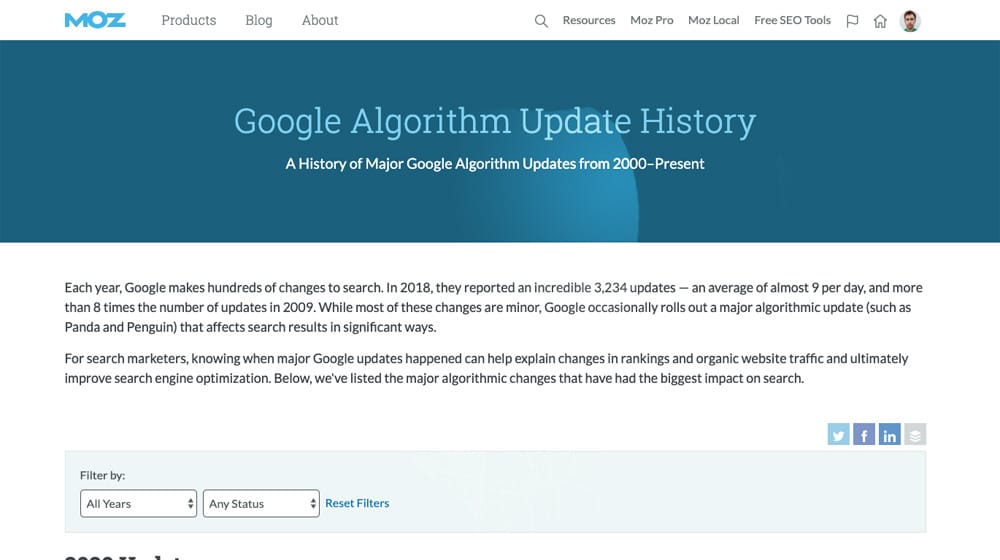
Deleting "zombie posts" can have a big impact on SEO, but so too can buffing them up. Here's my guide on updating old content.
28. Reduce Your Bounce Rate
Bounce rate isn't always a bad thing – satisfied users can bounce and still be happy – but it's always better if you can keep those users around for longer, to engage with your content, give you better metrics, and eventually follow a call to action.
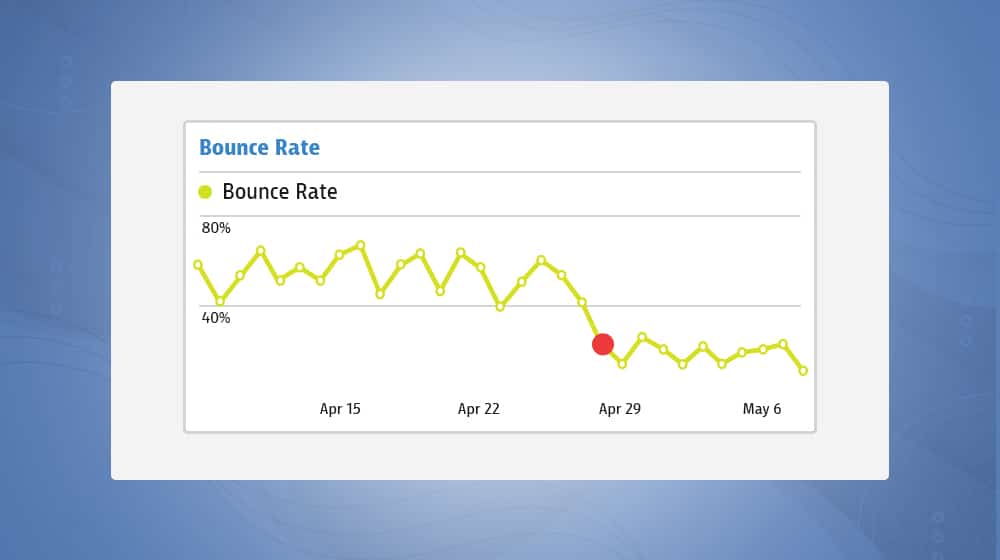
Reducing your bounce rate can help with SEO through a lot of indirect means. Here are a few ideas on how to do it.
29. Use Formatting for Ease of Reading
Every good blog post should be optimized for the people who want to skim it.
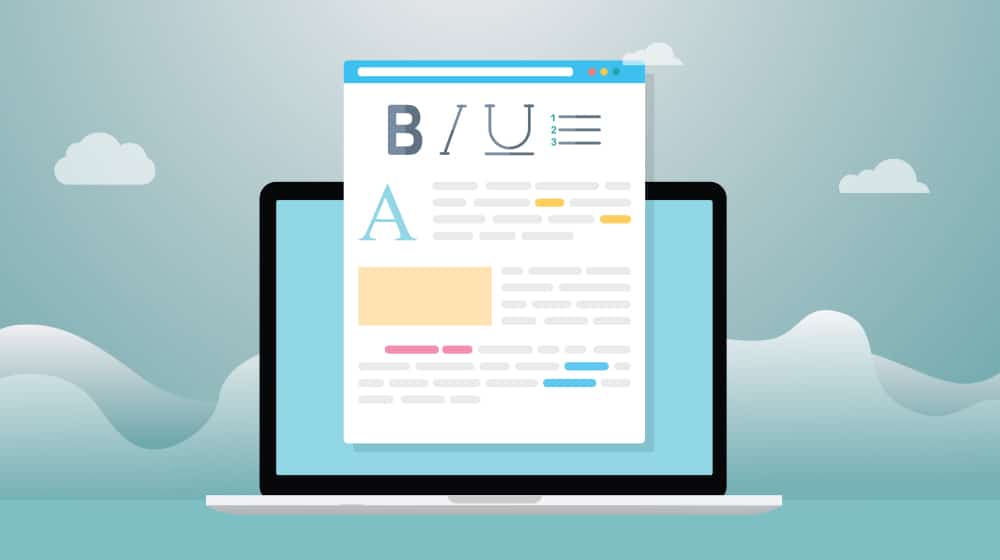
I do a lot of little tricks to help with this.
- Include a table of contents with easy navigation links.
- Include plenty of subheadings.
- Include bold, italics, and underlining for key passages.
- Make important points and quotes stand out.
- Use bulleted and numbered lists.
- Keep sentences and paragraphs short.
All of these make it easier for a reader to skim through a post and extract the value they want from it.
30. Nuke Attachment and Tag Pages
WordPress automatically creates dedicated pages for attachments, images, and tags. I highly recommend making sure these are "noindexed".
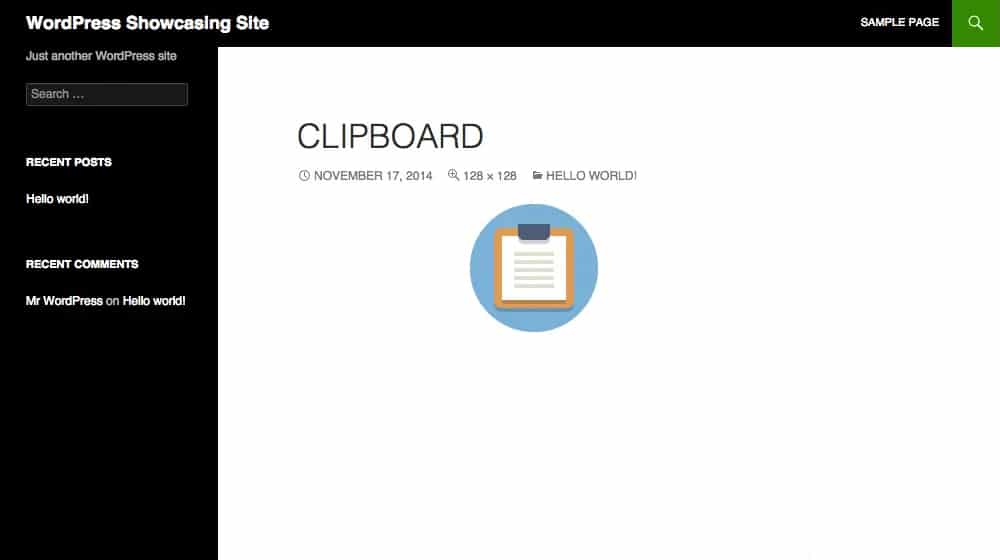
The only exception would be if you use the tag pages, but I generally recommend using categories instead of tags; it's a better navigational style and makes more logical sense. I wrote a more detailed breakdown of this topic here.
Attachment pages are pages that are created for every image that has ever been uploaded to your website. It's essentially a blog post that contains the image you uploaded, without any text or caption. These are the sort of low-value pages that can water down your overall content quality and hurt the performance of your site. Make sure they aren't being indexed.
31. Add Text Transcripts When Possible
Google is getting better at reading content that's not just pure text, but they still don't necessarily parse everything that is in an image or a video or audio file. When they do attempt to parse it, they might also get it wrong.
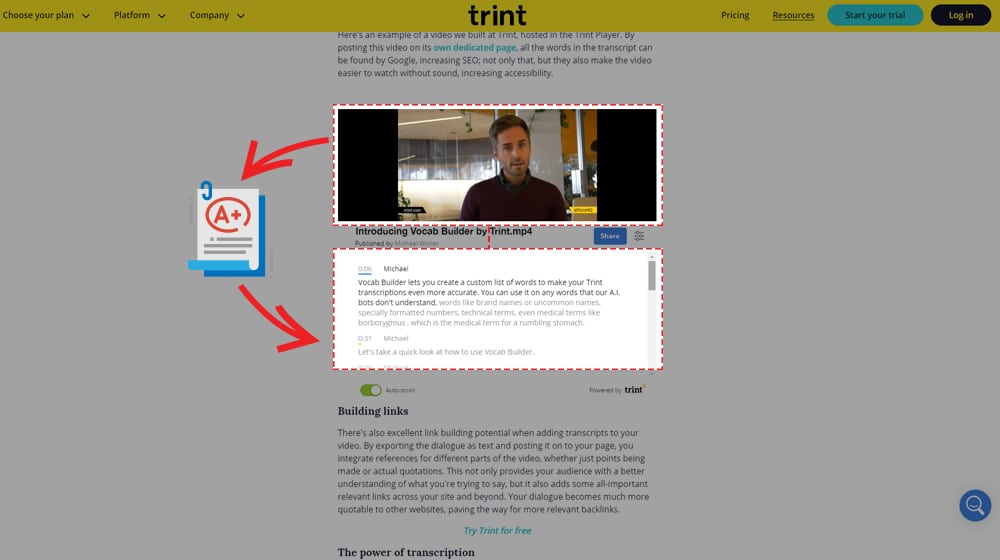
Thus, it's generally a good idea to include additional text for your multimedia. For videos and audio, that means a transcript. For images, alt text helps, but so does a blog post rundown in the case of something like an infographic.
32. Keep Users on Site Longer
Dwell time is a powerful metric. Keeping users on your site longer gives you more data to work with, to identify roadblocks, to expose them to CTAs, and to generally engage them with your content.

The more you can keep users around on your site, the better off you'll be. Here's a good guide from Neil Patel about the subject.
33. Build Backlinks with Multimedia
There are a ton of different ways to build backlinks. Skyscrapers, moving man, broken link building, guest posting; it's all worth doing. I also recommend using techniques like "guestographics" for infographic marketing, or video marketing, to build backlinks.

Encourage other bloggers to share and embed your media, as long as they link to your site for the source. Boom: easy backlinks.
34. Monitor for Unlinked Mentions and Convert them to Links
Google has made some motions that make me think they've started counting unlinked mentions (cases where someone mentions your brand or author name but doesn't link to you) as a source of value, but it's still nowhere near as good as a real link. Thus, it's often a good idea to reach out to anyone who mentions you but doesn't link to you, and ask for them to convert the mention into a link.

Ahrefs has a good guide on both how to find those unlinked mentions and how to ask for them to be converted into links.
35. Steal Broken Backlinks to Competitors
Pages move all the time. This often leaves links to break along the way. Keep an eye out for backlinks that point to your competitors.

When they move or remove content, find the broken links, and look for chances to approach site owners and get those links changed to point at your content. Backlinks are still one of the most powerful ways to boost your site, after all.
36. Watch for User Experience Roadblocks
Users who spend time on your site will eventually either leave or convert. You want them to convert, of course, but there are all kinds of reasons why they won't. Use data gathering tools like heatmaps and mouse tracking to see what users are doing, and why they might be stopping. Is a web form too long? Was a CTA ill-timed and drove them away? Is your CTA button not clearly a button? Are they clicking something expecting it to be a button when it isn't?
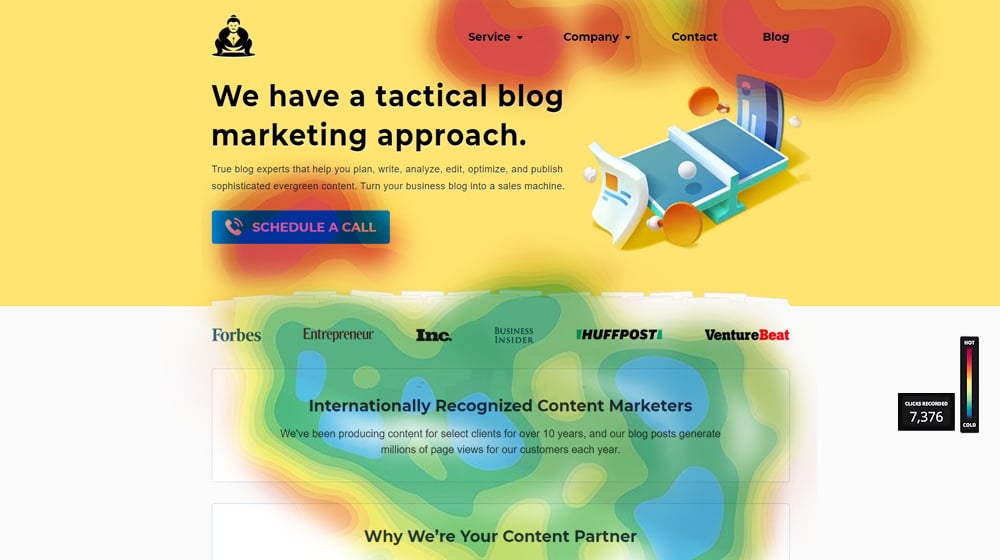
All of these are issues you can fix to improve your user experience. You can use heatmap tools like Crazyegg or Hotjar to find hot spots (and cold spots) on your site.
37. Periodically Scan for Broken Links
It's a good idea to run a scan every month or so on your website, looking for links that have broken. When you have broken links on your site, it makes your site look less well-maintained, and that can be a strike against you. It's also poor practice for usability and makes you the target of people who want to do broken link building (increasing your email spam). Keep an eye out for broken links and change/remove them when you find them.
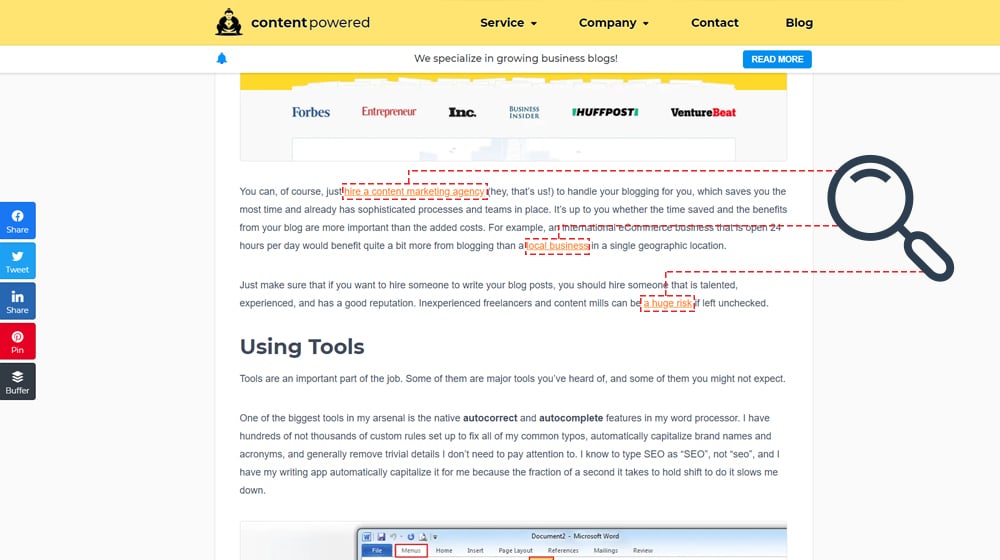
Search engines rely on pages to be updated, so doing a little housekeeping like this goes a long way. It shows search engines that you are keeping track of these things, and it makes your content more reliable by updating your broken links. If you use WordPress, you can consider installing the plugin Broken Link Checker. It's what I use, and it does its job well.
38. Run an SEO Audit
There are dozens of tools on the web to run free or cheap SEO audits, which can check hundreds of technical issues automatically. Periodically run one of these.
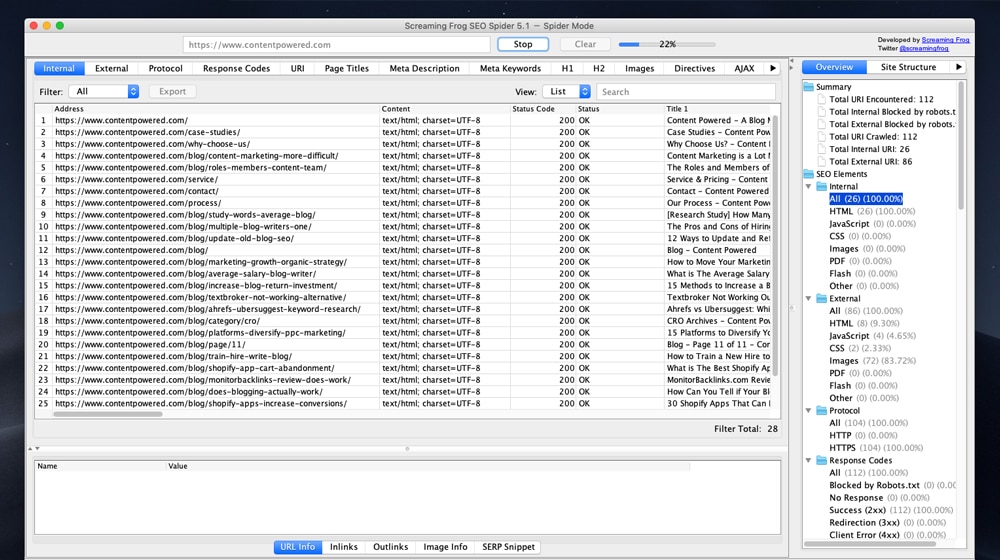
There are two reasons:
- Sometimes, SEO standards change, and what used to be best practices might no longer work.
- Things change, and old scripts, links, content, or media can break on your site, without you noticing.
Identifying SEO issues and fixing them is hugely important. Running an SEO audit every so often helps you run down that checklist automatically.
39. Write for Humans First
A general tip, remember that while you're trying to cater to search engines for SEO, search engines are trying to cater to users.

Write your content for users first. If you're faced with the choice of doing something that improves SEO or doing something that makes users more likely to engage, do the one that benefits users. Search engines won't mind, trust me.
40. Be Smart About Link Building
There are hundreds of link-building strategies, ranging from black hat spam to gray hat PBNs to white hat outreach. I recommend sticking to the effective, white hat, useful strategies as much as you can. Make sure you're building backlinks, but do it smart; a single good link from a good site is better than a hundred bad links from mediocre sites.

I wrote a guide with a handful of powerful link-building and growth hack techniques (if you're interested).
That's that! My 40 top actionable tips for blogging SEO. With this list in hand, you'll be able to do a lot to boost your site in a matter of weeks.
Let me know how it works! How many of these tips did you already keep in mind, and how many are new to you? Did I miss any? Drop a comment down below, I'd love to hear your thoughts!



 30 Second Summary
30 Second Summary


June 28, 2022
Love tip #39. I feel like this should be a no-brainer but you'd be surprised how many people forget this quite often.
June 29, 2022
Thanks David, glad you enjoyed this post! I tried to write for humans as much as possible 😂
September 14, 2024
Hey there,
Thanks for these tips. I'm just curious how do you figure out when to update old content compared to making new posts?
September 16, 2024
Hey Kanesha!
Great question! You're pretty much on the right track with wondering about this. I usually start by checking for outdated info first just making sure the old posts stay relevant. If a topic changes fast you're definitely going to want to update that older content.
That said mixing in new posts is also pretty important to keep the blog fresh and involved. Have you thought about doing both at once? Some bloggers find that balance works well.
Let me know if you need more tips!
October 03, 2024
is it hard to pick between updates and new posts? i always wonder if there's a perfect balance.
October 08, 2024
Hey Ora!
You have a great question there! It can definitely be difficult to balance updates with new posts. You probably know that updates keep things fresh which search engines really like. Plus new posts help expand your topics and bring in fresh keywords and ideas.
I usually recommend trying to post weekly but you might want to refresh your top content each month.
Do you have any schedule for this? I find it varies for every site.
Happy optimizing! Let me know if you're ever looking for more tips! 🚀
October 08, 2024
Hey Ora!
You bring up a great question! It can feel pretty difficult to choose between updating old posts and creating new ones. You're right - they both have their own benefits. Updating gives your existing SEO a nice boost while new posts keep things fresh and fun. I usually find that a mix of both works quite well.
I sometimes like to look at posts that are doing decently and focus on updating those. It can definitely be powerful for SEO purposes to update successful content. Plus you're keeping up with the latest trends by adding fresh posts which keeps your blog active.
What kind of content are you focusing on now? 😊
Feel free to ask if you want more advice!